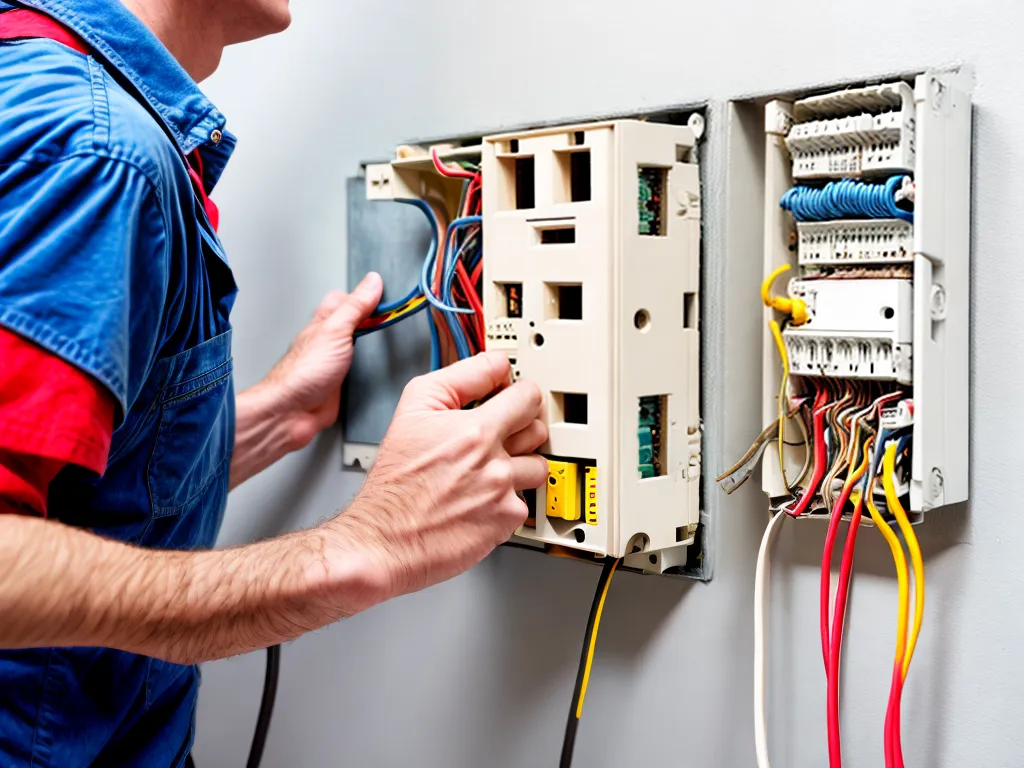
Rewiring the electrical system in your home can seem like a daunting task, but with proper planning and by following safety precautions, it is possible for a homeowner to rewire their home successfully. Here is a comprehensive guide on how I rewired my home's electrical system myself.
Assessing the Current Electrical System
Before beginning any rewiring project, it's important to thoroughly assess the current electrical system in your home. Here are some key steps I took:
Inspecting the Electrical Panel
The electrical panel, or breaker box, is the central component that connects the whole electrical system in your home. I checked the following:
-
Main service size - The main breaker size determines the amount of power your home can draw. I checked my home's service size to ensure it could handle any upgrades I wanted to make.
-
Breaker capacity - I inspected each circuit breaker to ensure none were overloaded or nearing max capacity. This helped me identify which circuits needed upgrades.
-
Grounding - I confirmed the electrical panel was properly grounded for safety. This included inspecting the ground wires and ground rods outside.
Checking all Outlets and Fixtures
I tested every outlet and light fixture in my home to take notes on:
-
Any outlets or lights that were not working - This helped identify problem areas needing rewiring.
-
Outlets with open grounds or reverse polarity - This can indicate unsafe wiring that needs to be addressed.
-
Areas with insufficient circuits - Multiple rooms or appliances on one circuit can mean the circuit needs to be split into multiple circuits.
Planning the Rewiring Project
After thoroughly assessing my electrical system, I developed a detailed rewiring plan. Key steps in my planning process included:
Choosing a New Panel Size
Based on my inspection, I determined my current 100 amp main service panel needed upgrading to 200 amps to handle added circuits.
Mapping New Circuits
I mapped out new 15 and 20 amp branch circuits to evenly distribute the electrical load throughout my home. Important factors included:
- Not exceeding safe load limits for each circuit size
- Providing dedicated circuits for large appliances like refrigerators and AC units
- Having enough circuits for each room based on their size and use
Selecting Updated Outlets and Fixtures
I opted to replace all outlets with grounded 3-prong outlets for safety. I also chose LED light fixtures for increased efficiency.
Calculating Needed Wiring and Materials
I measured all circuit runs and added up the total footage of 12/2 and 14/2 NM electrical wire I would need. I also made a list of all required materials such as junction boxes.
Developing a Step-by-Step Rewiring Plan
I wrote out a step-by-step plan to systematically rewire my home, starting with replacing the service panel, then rewiring each circuit one-by-one.
Safely Rewiring the Electrical System
With proper planning complete, I was ready to rewire my home's electrical system. I followed important safety measures:
Turning Off Power and Checking It Was Off
I turned off the main breaker and then checked outlets with a tester to confirm power was shut off. I also put a warning sign on the electrical panel informing others not to restore power.
Working on One Circuit at a Time
I disconnected and replaced each circuit individually, from the panel to all outlets and fixtures. This prevented any mix-ups in the wiring.
Using Safe Electrical Procedures and Gear
I followed proper protocols for making connections and insulating wires. I also wore rubber-soled shoes, insulated gloves, and safety goggles for protection.
Having Inspections Done
I had my work inspected by the local building department after replacing the service panel, and again when the whole rewiring job was complete.
Results After Rewiring Electrical System Myself
Completing this major DIY rewiring project myself saved thousands of dollars in electrician fees. More importantly, I gained updated electrical:
-
The new 200 amp service provides ample power for current needs and future expansion.
-
Added circuits distribute electrical loads more efficiently.
-
Grounded outlets and new wiring provide much safer electricity throughout my home.
-
LED lighting and higher efficiency reduces energy usage.
While rewiring your home is complex, the savings and benefits are tremendous. With good planning, safety diligence, and inspections, homeowners can tackle rewiring projects successfully. This project improved my electrical system for the next several decades.